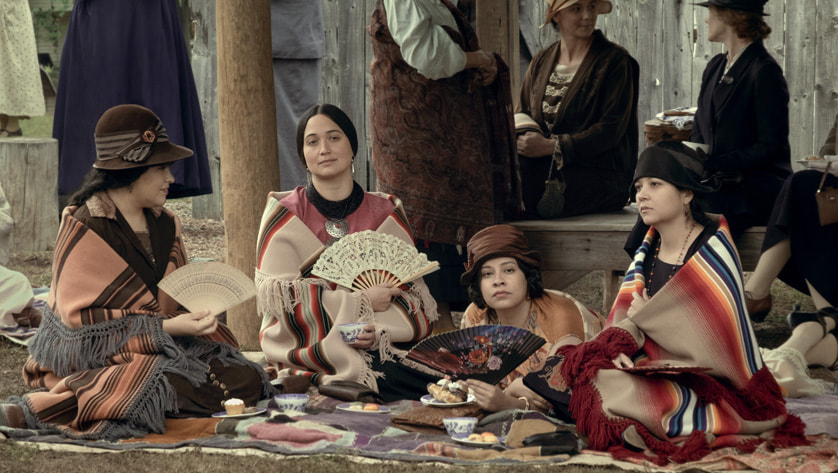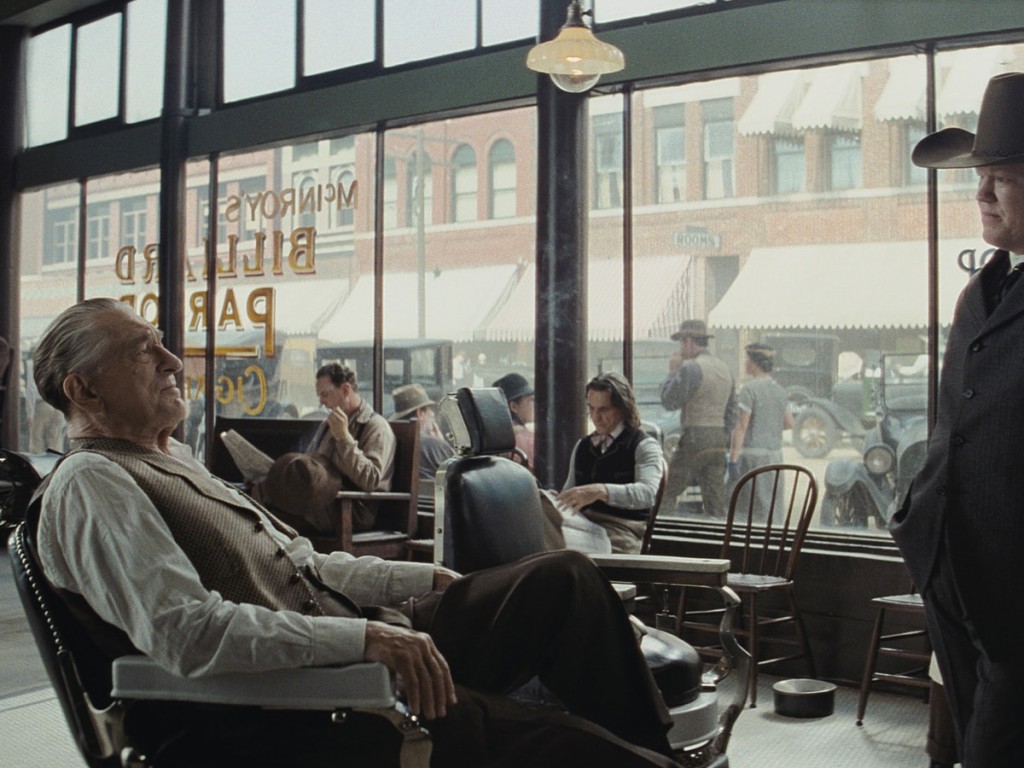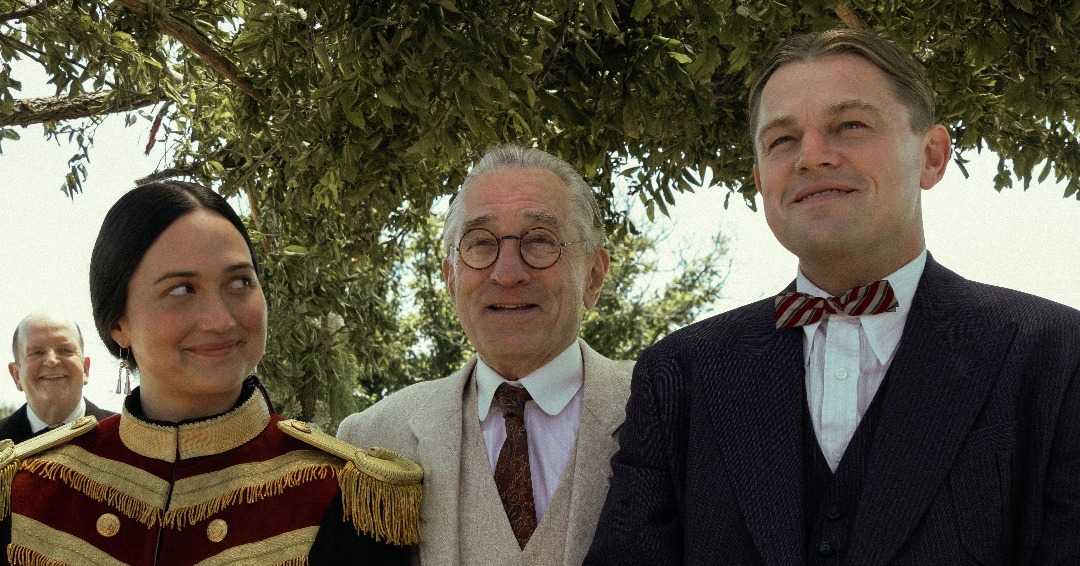FILM REVIEW
KILLERS OF THE FLOWER MOON
Rated R
206 Minutes
Released October 20th

So…3 ½ hours? I was dreading this movie simply because I have a hyperactive nature, and it’s insanely painful for me to sit still that long. But Scorsese and his longtime editor, Thelma Schoonmaker, set a foreboding pace in the narrative that never waivers. This is a tale of unforgivable stupidity, entitlement, and horrific prejudice that human beings can harbor towards one another. The cast is decidedly not pulled from the set of The Bachelorette. Every face tells a long, hard story, another Scorsese signature. The sweeping landscapes of Oklahoma captured by the incredible camera work of cinematographer Rodrigo Prieto and the authentically appointed interiors by production designer Jack Fisk place the audience richly inside this historical panorama.
The movie is based on the 2017 nonfiction book by David Grann, Killers of the Flower Moon: The Osage Murders and the Birth of the FBI, about the murders of members of the wealthy Osage community in Oklahoma in the 1920s, which was reportedly written in a whodunit style. In this movie, Scorsese creates a character study focusing on the white characters in the story whose motives are more than questionable – his signature as a filmmaker.

Scorsese felt the first draft of the script had “no soul to it.” To his credit, he met with National Chief Geoffrey Standing Bear in 2019 of the Osage Nation. After that, the love story between settler “Ernest Burkhart,” played by Leonardo DiCaprio, and “Mollie,” played by Osage actress Lily Gladstone, became central to the story, which is told from the point of view of white culture, Scorsese being part of that culture. Although this well-crafted film goes to great depths to tell this story, I felt that I understood the history, but I did not bond with the characters. The most sympathetic players in the story, the Osage, are on the periphery of the action. Despite this, Gladstone’s performance stands out. Her steadfast peace and calmness provide a bright light of contrast to the lurching greed of the white power players. Her Mona Lisa smile masks her pain as she senses the greed that is bringing down everyone around her.
The original Osage land on our continent stretched across several states in the Midwest. By the late 1800’s, they had been confined by white settlers to a small parcel in what is now Oklahoma. But around 1900, massive oil deposits were found on this land. The 2000 Osage who remained on the reservation became the world’s richest community in per capita wealth. Their lifestyle took on entrapments and riches that were coveted by the white outsiders in their territory, and the US government appointed white legal guardians to control their fortunes. Here is where our story begins. The loose morality and lack of rules and structure of the Wild West frontier allowed a horrific series of events to take place. The final scene in the film cuts to a more modern time, in which the players faces and voices are devoid of comprehension of non-white cultures, as this story and others like it had been hidden from traditional US classroom history in the 20th Century.

The Osage Nation was thrilled to see their culture represented on film. Says Christopher Cote, a language consultant on the project, “As an Osage, I really wanted this to be from the perspective of Mollie and what her family experienced. But I think it would take an Osage to do that.” Osage Princess Gianna Sieke, who was also on set, says, “As Native Americans and as Osage, we are storytellers…And I feel like it’s very important for us to continue telling our history.” Native American Devery Jacobs, who stars in the TV series Reservation Dogs, says on social media, “I can’t believe it needs to be said, but Indigenous people exist beyond our grief, trauma, and atrocities. Our pride…our languages, cultures, joy, and love are way more humanizing than showing the horrors white men inflicted on us.”
This is a universal tale, told repeatedly throughout history and in different cultures. The most impactful effect of Killers of the Flower Moon will be to spur Native American communities to tell the stories of our shared past from their point of view.
Kathryn Whitney Boole has spent most of her life in the entertainment industry, which has been the backdrop for remarkable adventures with extraordinary people. She is a Talent Manager with Studio Talent Group in Santa Monica. kboole@gmail.com












